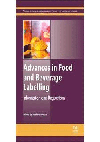Understand key 3-A Sanitary Standards terms
Equipment must be cleanable, readily accessible and substantially flush.

3-A Sanitary Standards have a long history of use for the design and operation of equipment and utensils in the manufacturing, processing, packaging and storing of milk and dairy products. 3-A Accepted Practices for systems such as those used to produce culinary steam or air under pressure to be directed at product or product contact surfaces are also widely used.
The 3-A criteria are used to ensure compliance with the requirements of both USDA rules under 7 CFR Part 58 — Grading and Inspection, General Specifications for Approved Plants and Standards for Grades of Specific Dairy Products and similar rules under the Grade “A” Pasteurized Milk Ordinance.
These criteria also maintain broad use among other food facilities to help develop the required written food safety plan and preventive controls to comply with the Food Safety Modernization Act (FSMA). With the implementation of FSMA, there has been increased scrutiny and enforcement of cleaning procedures, as the FDA is allowed to make unannounced facility inspections.
The application of these and other key terms is significant because of the long history of use and congruence with terminology used by regulatory sanitarians.
Cleanable
Food equipment must be designed and manufactured for all surfaces to be accessible for cleaning, sanitizing and inspection. There are three common cleaning methods used in the food processing industry: clean in place, clean out of place and manual cleaning.
Sanitation controls for ready-to-eat foods that are exposed to the environment require environmental monitoring as a verification of the cleaning process.
Readily accessible
Equipment must be designed and manufactured for all surfaces to be accessible for cleaning, sanitizing and inspection, regardless of the cleaning method. Care should be taken to avoid creating a dead end not accessible to cleaning solutions.
To facilitate the cleaning and maintenance of the equipment and adjacent spaces, the equipment needs to be in a location that can safely be reached by personnel from the floor, other permanent work area or a stable platform (permanent or moveable).
Substantially flush
Gasketed joints for sanitary fittings or other components must be substantially flush with the mating interior. This means the mating surfaces must not be more than 1/32 inch (0.794 millimeter) offset from each other, except for pipeline and tubular piping welds, which must meet AWS/ANSI D18.1. Surfaces that are not substantially flush are not cleanable without disassembly.
The 3-A Sanitary Standard for General Requirements is a compendium of key criteria found in 3-A Standards and Accepted Practices. Free e-learning modules available in the 3-A Sanitary Standards Inc. Knowledge Center at www.3-a.org explain the foundation concepts of hygienic design.
These resources can assist a food facility in its efforts to develop and maintain equipment that complies with required Current Good Manufacturing Practices and to establish adequate sanitation controls in its food safety plan that will minimize the opportunity for growth of microorganisms, allergen cross-contact and contamination
Looking for a reprint of this article?
From high-res PDFs to custom plaques, order your copy today!









